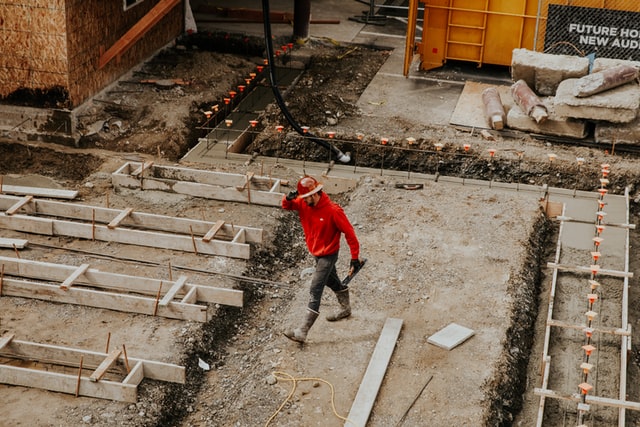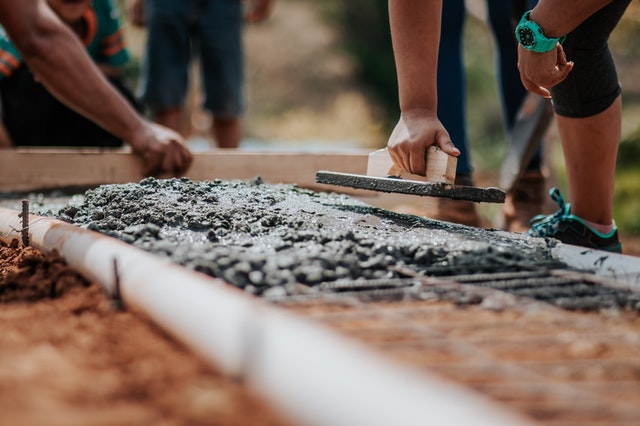Professional Drywall Repair in Aurora, CO
About Concrete Molds
This is an excerpt from the Book called “Easy Concrete” by Malena Skote. Continue reading to learn more about About Concrete Molds, thanks to the author.
About Molds
It isn’t possible to write about concrete without writing about molds, since they determine how the finished objects will look. You pour concrete into a mold like batter into a cake pan. The concrete hardens in the mold and the finished object takes on the shape of the inside of the mold. This means that when you make molds for concrete casting you have to imagine the negative image—that is to say, the cavity into which the concrete is poured.
Inspect the mold carefully. What material is it made of? Is the material smooth or matte? Are there trademark symbols that might make an imprint on the concrete? Don’t forget that even price tags left on the surface can leave impression! And remember that the mold has to be strong enough so that it doesn’t collapse when you pour in the wet concrete.

Concrete is a somewhat surprising material. When you pour it into the mold you have no control over what will happen. You simply have to be patient and await the exciting moment when you can see your brand new concrete object.
Plastic Molds
Plastic pails, pots, and basins are available cheaply at flea markets and large stores. Save ice cream, cookie, and dairy containers, and ask for empty candy boxes at stores.
When you cast pots or bowls, you usually place a smaller bowl or plastic pot in a bigger one and pour the concrete into the cavity in between the two. So you need to try to imagine the volume of the space in between. How will the proportions turn out? How thick will the walls of the bowl/pot be? The outer (larger) mold’s inside should be as smooth as possible. Are there measurement markings that can leave impressions? For the inner ( smaller ) mold, it is the outside that should be smooth so that it doesn’t get stuck to the concrete. Saw or file away rough edges and tape over draining holes in plastic pots.
And remember that if the mold is flexible and the plastic is somewhat smooth, you won’t need to oil it.
Wooden Molds
Wooden boxes, cases, and plates are available at flea markets and large stores, or you can easily make them yourself from pieces of wood. If you wood is untreated and seems absorbent seal it first; otherwise the wood will absorb the water from the concrete and the concrete surface may turn sandy. Use transparent wood or acrylic sealer. Formwork plywood is especially made for concrete casting and is covered with a film that makes it release the concrete easily. It is sold in largepieces from building-supply companies. If you don’t want such a big piece, you can ask at construction sites for leftovers. Used formwork plywood can usually be scraped clean and re-used. With wooden molds, you get straight corners and sharp edges on your concrete objects, in contrast to the rounded edges you get from plastic molds. A wooden mold must be tight and without gaps, or else the water in the wet concrete will run out and the edges will be crumbly. Screw your mold together, instead of nailing, so the joints will be tighter; it will also be easier to take the mold apart. Formwork plywood is easy to screw into if you first make holes with a sharp awl.
Metal
Although you can make concrete plates on top of metal ones for deeper molds, such as cake pans and saucepans that are rigid and cannot be stretched, the concrete can get stuck. Oiling the mold first with a thin layer of lubricant will help prevent the concrete from adhering to the sides. Avoid using tins because the ridges will hold the concrete fast.


Paper
Ordinary, flimsy cardboard will dissolve in wet concrete, but firm paper, such as paper tubes from building-supply stores and boxes can be used as molds. Milk and juice cartons have waxed interiors that easily release concrete, but they must be supported from the outside so they don’t bow and split when the heavy, wet concrete is poured in.
Silicone And Rubber
Mold silicone and liquid rubber can be used to make molds for more complicated figures, such as animals and fruits. Choose a good original, such as a beautiful apple, cover it in silicone or rubber and let it harden then remove the apple and pour concrete into the mold. Mold silicone and rubber are available in craft stores, art stores, and shops that sell materials for ceramics. Pre-made molds for plaster, soap, and so on can be used for concrete, and they are available in craft shops.
Release Agent
Greasing the mold with lubricant makes it easier to release the finished concrete piece. Cooking oil and petroleum jelly can be used, but they will make the surface of the concrete very porous. A porous surface can be beautiful if that is the effect you are after, but if you want a completely smooth surface, use a thin liquid oil specifically for this purpose (mold oil is available from building-supply stores). Nonstick sprays used for baking and lubricant sprays meant for mechanical machine parts can also be used.

